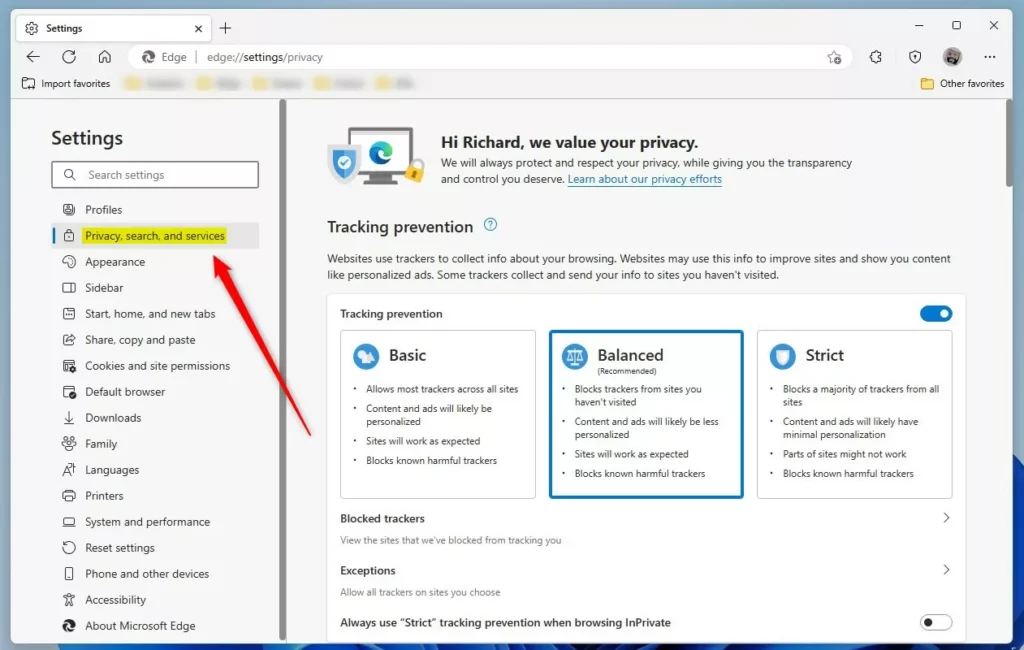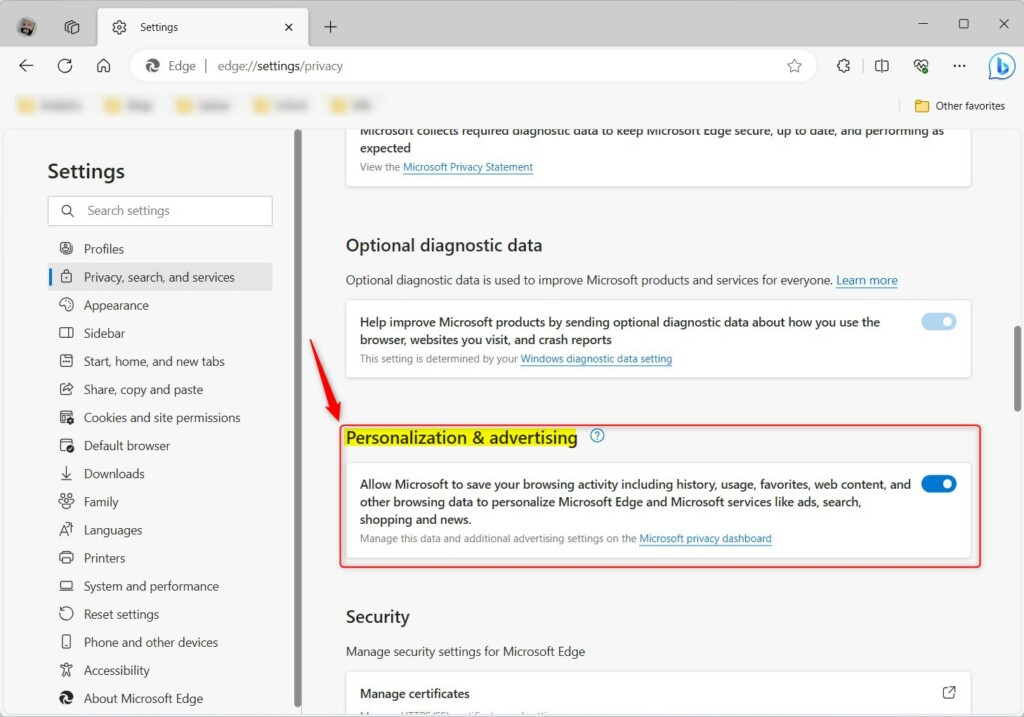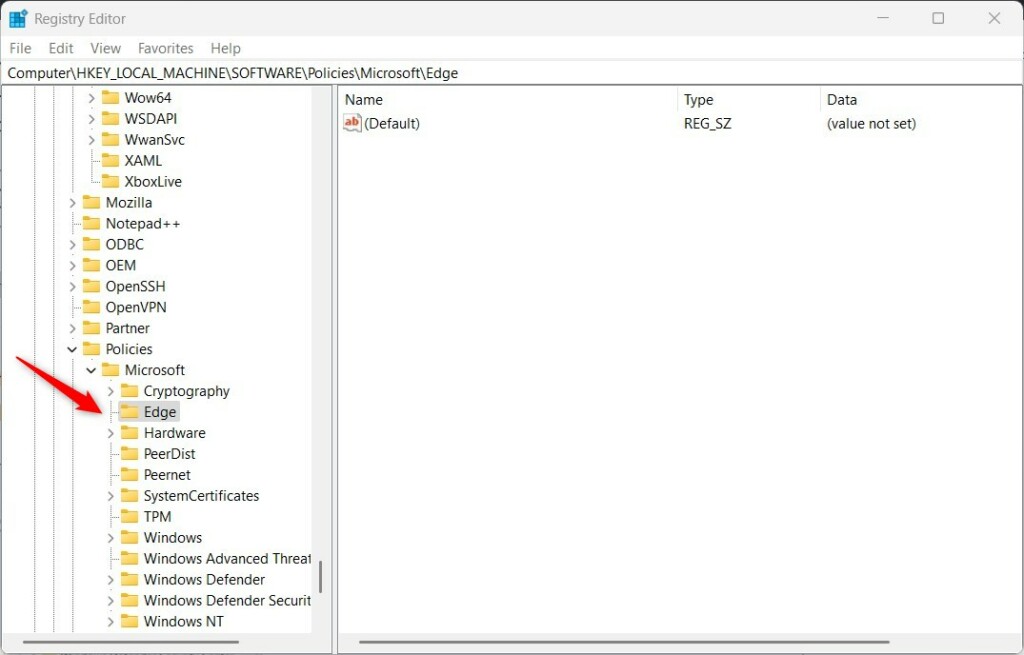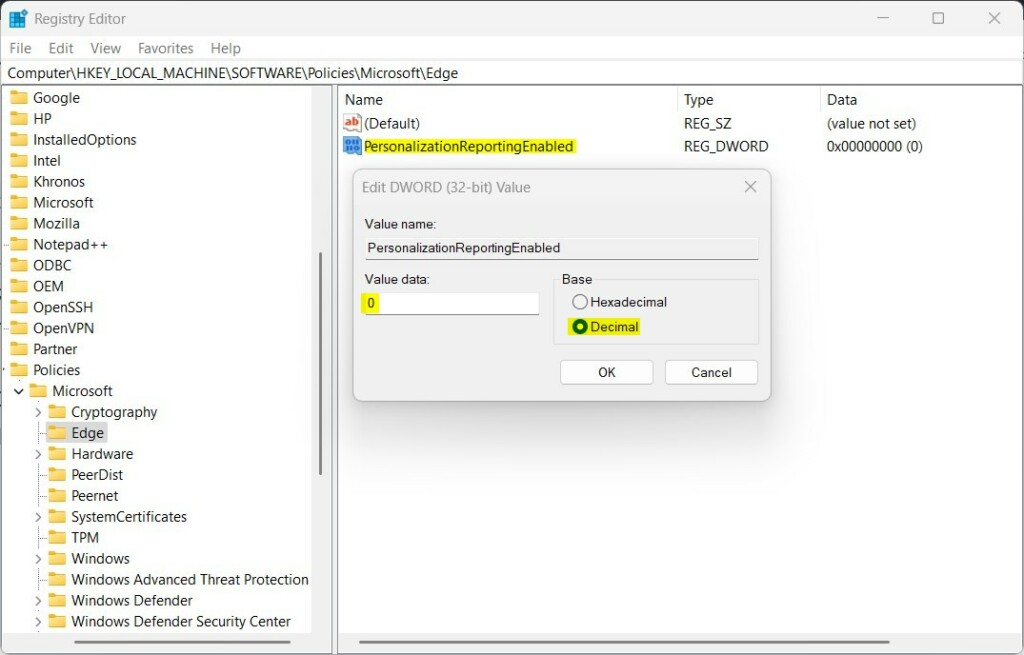This article explains how to turn “Personalization & advertising” On or Off in the Microsoft Edge browser.
The Microsoft Edge browser is the default browser in Windows 11. However, users can switch to their preferred or favorite browser anytime. Edge is based on Chromium, similar to Google Chrome and other Chromium-based browsers today.
Occasionally, one may get a prompt each time a new page or tab is opened in Microsoft Edge that reads, “Personalize your web experience.” Users can either select Got it! Or Manage settings.
If you select Got it! and make no changes to your privacy settings; you agree to allow Microsoft to collect and save your browsing activities, including history, usage, favorites, web content, and other browsing data, to provide personalized ads, search, shopping, and news.
Additional data include information about the websites you visit using Microsoft Edge, including the list of sites you visited and associated data such as the URL, site name, and time you visited the site.
Turn on or off Personalization & advertising in Edge
As mentioned above, Microsoft will use your browsing data to provide a personalized web experience, including ads, search results, and more.
If you don’t want Microsoft storing your browsing data to offer you a helpful web experience, you can turn it off.
Turn it back on if you’d like your information used for web personalization.
First, open the Microsoft Edge browser.
Then click on Setting and more (Alt+F) 3 horizontal dots button on the top right corner and select Settings.

On the Settings page on the left panel, click the Privacy, search, and services button.

Select the “Personalization & advertising” tile on the right.
Then, use the switch button to turn the feature On or Off.

Exit the browser setting when you are done.
Enable or disable Personalization and advertising in Microsoft Edge via the Registry Editor
Another way to turn “Personalization & advertising” on or off is using the Windows Registry editor.
To do that, open the Windows Registry editor, and navigate to the folder key below.
HKEY_LOCAL_MACHINE\SOFTWARE\Policies\Microsoft\Edge
If you don’t see the Edge folder key, right-click on the Microsoft parent key, then create the subkey (Edge) folder.

Right-click the Edge folder key’s right pane and select New > DWORD (32-bit) Value. Type a new item named PersonalizationReportingEnabled.
Double-click the new item you created (PersonalizationReportingEnabled) and update the Value data:
- To disable personalization & advertising, type 0.
- To enable Personalization & advertising, delete the PersonalizationReportingEnabled item created above.

If you stop sharing this data, Microsoft will no longer collect and use your browsing activity for Personalization of advertising or experiences from that point forward.
That should do it. Restart your computer for the changes to apply.
You can also manage data and additional advertising settings from your Microsoft account privacy dashboard.
Windows advertising settings can also be controlled from your device.
That should do it!
Reference:
Conclusion:
- In this article, you learned how to manage Personalization & advertising settings in the Microsoft Edge browser, including turning it on or off and hiding its prompts.
- By following the step-by-step guide, you can take control of your browsing data and tailor your web experience according to your preferences.
- Additionally, utilizing the Windows Registry editor provides an alternative method to enable or disable Personalization & advertising.
- You can also manage data and advertising settings through your Microsoft account privacy dashboard and device settings.

Leave a Reply